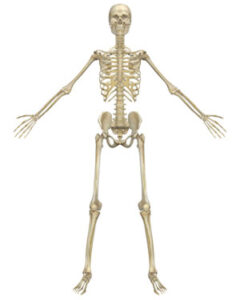I just finished reading Dr. R. Keith McCormick’s latest book, Great Bones: Taking Control of Your Osteoporosis. Since joining the “thin bones club,” I’ve read several books on the subject. This latest entry is by far the best. It provides a comprehensive review of the subject matter and associated research in a way that’s accessible to the novice while still whetting the appetite of medical practitioners (and nerds, like me).
If you’re not interested in wading through all the material, you could skip to the final chapter and avail yourself of Dr. McCormick’s 10 steps to great bones.
 Work with your doctor to get a comprehensive set of labs to see if your current diet and supplements are providing all the nutrients you need to support bone health. They’ll also tell you whether or not your bone remodeling has stayed in balance. Use the reference materials in the book to review your own numbers and take action, as needed.
Work with your doctor to get a comprehensive set of labs to see if your current diet and supplements are providing all the nutrients you need to support bone health. They’ll also tell you whether or not your bone remodeling has stayed in balance. Use the reference materials in the book to review your own numbers and take action, as needed.- Create an anabolic body by pursuing a diet high in fruits and vegetables, low in sugars and processed foods, and replete with good, clean water. Add fermented foods to keep the microbiome happy,
- Fuel muscles and bones with high quality protein to sustain muscle mass and strength.
- Optimize cellular metabolism by eating minimally processed, bioactive foods, and supplementing with bioactive compounds. Plants are loaded with phytochemicals that limit free-radical damage and reduce oxidative stress. Get a rich variety of them by eating produce across all the colors of the rainbow.
- Ensure good digestion and bowel heath. Eat slowly; savor as you chew. Get plenty of fiber. Consider HCl supplementation if older and experiencing bloating after meals as HCl decreases with age.
- Reduce free radical exposure and oxidative stress to minimize damage to cells and tissues. Eat food rich in antioxidants (fruits and vegetables), consider antioxidant supplementation (e.g., alpha-lipoic acid, NAC, CoQ10, resveratrol, quercetin, vitamin C), limit alcohol consumption, and don’t smoke.
- Improve body acid-alkaline balance. The blood serum likes to be slightly alkaline and draws calcium from bones should it become acidic. Diets high in fruits and vegetables with adequate protein generally does the trick.
- Watch your salt intake as excess intake increases calcium loss through urine, contributes to low-grade metabolic acidosis, and increases bone resorption.
- Do weight bearing exercise and strength training to improve bone health. Areas of weakened bone can only repair if the body is active.
- Get adequate sleep. Folks who consistently get only 5 hours of sleep per night tend to have lower bone density. It makes sense. The body needs sleep to rest, restore, and repair. Give it the time it needs to get the job done!
I’ll add an 11th step: Buy the book and read it. You’ll get a clear sense for why all of these recommendations make sense and have a superb reference manual to answer questions as they arrive. As I said earlier, it’s excellent!